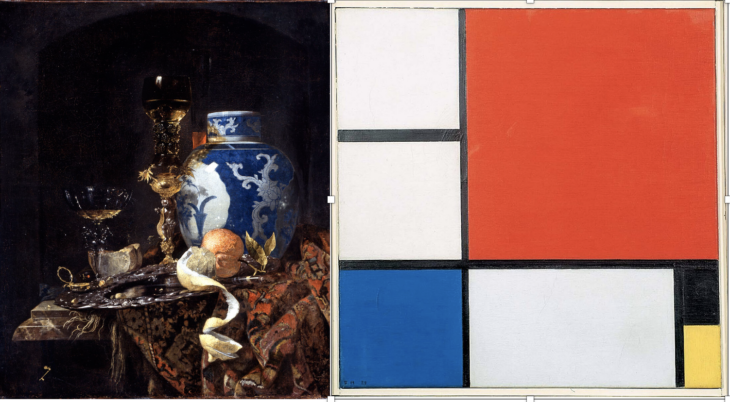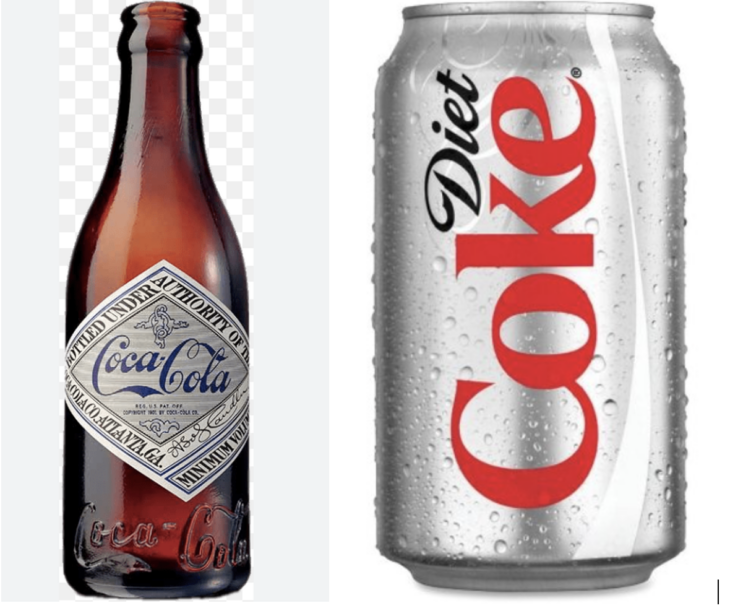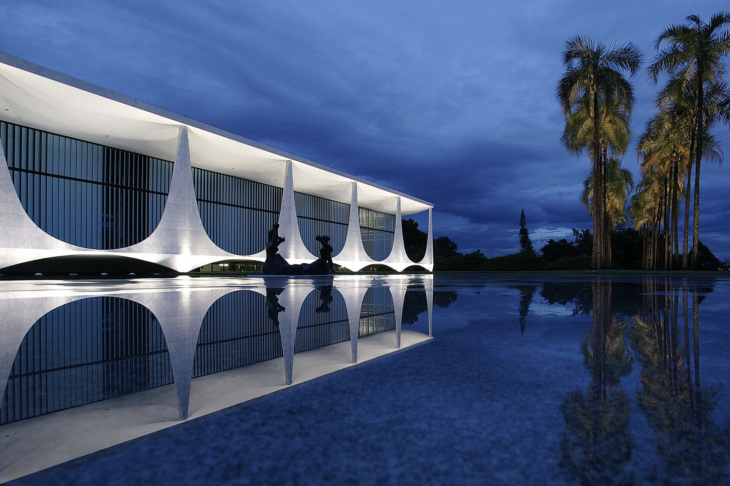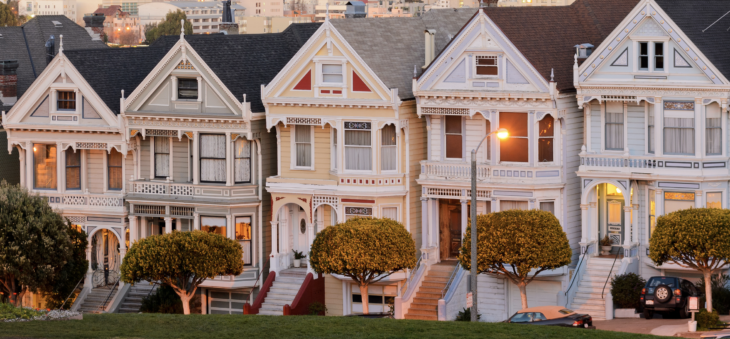Finance
That’s the style: Markets and modernism

Less is more – Ludwig Mies van der Rohe
Less is boring – Robert Venturi
In a recent post, Alex Tabarrok discussed the problem of modern architecture. Why are architects no longer producing the kind of beautiful old buildings we see in many European cities? Alex quotes an article by Samuel Hughes, which rejects one popular explanation: the theory that rich decoration is becoming increasingly expensive, mainly because there are fewer craftsmen trained to produce beautiful sculptural details. Hughes shows that this statement is incorrect, and that modern technology would make it possible to produce decorations at relatively low cost. Instead, he makes a kind of “market failure” argument. Ugly, boring and sterile buildings were imposed on the public by a group of elite intellectuals in the 1920s:
to exaggerate a little: it really happened that every government and company on earth was convinced by the wild architectural theory of a Swiss clockmaker [Le Corbusier] and a cabal of German socialists, so that they came to want something different from what they had wanted in all previous centuries. You could say this is mysterious. But the mystery is real, and if we want to understand reality, we must face it.
In this article I argue that there is no market failure. In a sense, modernism is what the audience actually wants. And not just in architecture, but in almost all aspects of life.
Hughes’ theory is not new. In 1981, Tom Wolfe made a similar argument From Bauhaus to our house. Unfortunately for Wolfe, the “problem” was not limited to architecture, and so he had to write another book (The painted word) which explained why beautiful old styles of realistic painting were replaced by abstract art. Here are a few examples from the Netherlands.
In the case of architecture, tourists generally prefer the richly decorated old buildings of Amsterdam to the modernist buildings of Rotterdam, which replace those destroyed in World War II. But buildings are not built for tourists, they are built for residents and workers.
Even two TomWolfe books are not enough to fully explain modernism, which has influenced (infected?) virtually all areas of contemporary life. Someone with absolutely no training in art theory can immediately recognize the difference between more complex and ornate traditional styles and more simple and streamlined modern styles. So consider how Coca-Cola containers have evolved over time:

Even the name has been simplified: “Cola”. I will show that a similar change has taken place in almost all areas of life. But first we need to clarify a few concepts. People often contrast ‘modern’ with more ‘classic’ styles. Classic here means ‘from the past’. But art historians are more likely to use the term classical to represent a simple, elegant and symmetrical structure, while Romanticism represents various forms of complex, asymmetrical and highly decorated structures.
The British Houses of Parliament were built in the mid-19th century, while the Jefferson Memorial was built in the 1940s. But the Jefferson Memorial is classical, while the Houses of Parliament are a form of Romanticism (specifically Gothic Revival). Brazil’s ultra-modern government buildings (see below) are indeed much more ‘classic’ than Pugin’s.e century masterpiece.

Tabarrok and Hughes are right that in at least some respects people prefer more traditional architectural styles. Consider San Francisco’s famous “painted ladies”:

But traditionalists underestimate the extent to which modern styles have even influenced consumers’ housing choices. More than 100 years ago, Frank Lloyd Wright revolutionized architecture by replacing vertically oriented square houses full of strictly separated rooms with a more free-flowing horizontal style where public spaces flow seamlessly into each other. Few people are rich enough to afford a masterpiece like this Maarten House in Buffalo, but Wright’s approach influenced the postwar preference for “ranchhouses” with large windows and open floor plans.
The term ‘painted ladies’ reminds us that modernism has also influenced women’s fashion. Around 1900, wealthy women wore extremely ornate outfits. In the 1920s (the era of Le Corbusier), women’s fashion had become greatly simplified and “more modern”. In his memoirs entitled “The world of yesterday”, Stefan Zweig sees this evolution as a positive change, and links it to beneficial changes in culture that allowed young men and women to socialize in a more natural and freer way. Old-fashioned corsets and cumbersome dresses were therefore a kind of metaphor for painfully restrictive social norms and values.
If it is really true that in architecture the old-fashioned is beautiful and the modern is ugly, why doesn’t this also apply to women’s fashion? Did Le Corbusier also force women to throw away richly decorated outfits and replace them with simple black dresses? Certainly, in a sense, Parisian fin-de-siècle fashion was more beautiful than modern clothing. But is this what women want today? I do not think so. They want to be modern. “That’s the style.”
What about cars? Why are people buying simple, streamlined styles now, and not more? graceful styles from the forties? I suppose you could argue that this partly reflects government fuel economy regulations, but there are too many other examples to explain away.
I encourage people to go to an antique furniture store and look at all the ornate (and often overly stylized) items on display. You see things like solid oak tables with carved claw feet and heavy dark wood cabinets. Then walk out of the store and visit a furniture store with lighter Scandinavian teak designs. The furniture will immediately seem ‘more modern’. It will also seem more attractive to many people. Did Le Corbusier also impose modern furniture on the public? Was that streamlined furniture style enforced by federal regulators? Obviously not. Why have consumers stopped buying? ornate silver teapots and switch to sleek modern teapots? The examples of our modern preference for simplicity are virtually endless.
The man who said ‘Less is a boring’ also wrote a book called Learning from Las Vegas. But one of the lessons of Vegas is that adapting traditional styles to modern needs isn’t easy. Las Vegas is one extremely ugly city. Surprisingly, though, it’s least ugly when it’s at its most modern. The ugliest parts of the strip are places where traditional styles are clumsily tacked onto monstrous 3,000-room hotels, while the least offensive buildings in Vegas are a few minimally sleek modernist towers, like the Arie hotel. That’s not to say that buildings like the Bellagio aren’t interesting; as a tourist I would much rather walk through the lobby than through that of a sterile modern building. But it doesn’t really work as architecture. It is far too big for its neo-Italian style.
This doesn’t mean that traditional styles never work. Epic Systems’ headquarters just outside of Madison is full of them imaginative buildings based on various fairy tales. Unlike, Apple Its Silicon Valley headquarters is a tight circle, much in the style of its consumer products. In aesthetic terms, the Apple Building is more successful. But the Epic campus is probably more fun. To each his own. Companies have an incentive to use architecture that allows them to attract the workforce they want.
I also wouldn’t argue that the more recent is always better. I prefer the best paintings from the period 1600-1670 or 1850-1925 to the best productions of the past hundred years. I prefer mid-century modern architecture to the postmodern architecture of the 1970s and 1980s. I prefer the pop music of 1965-72 to the music of the last seven years. I prefer the films of 1950-1980 to those of the past thirty years. Flavors vary and your choices may differ.
But the fact that Modernism has taken hold in such a wide range of fields suggests that it is not a market failure imposed by remote elite architects in the 1920s. It is the style that best suits the modern world. And that is true, even though many of the older buildings are “better” in some sense. I wouldn’t want Gerhard Richter or Anselm Kiefer to copy the style of Velazquez or Vermeer. I wouldn’t want David Mamet to copy Shakespeare’s style. I wouldn’t want Beyonce or Taylor Swift to copy the Beatles or Bob Dylan. Every generation tries to find its own style. That’s the market at work.







